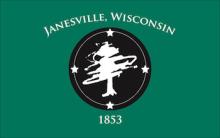Federal Grants Available for Rural Broadband Projects
Federal broadband grant programs start accepting applications in the spring. 2018 is an especially exciting year because the Connect America Fund (CAF) II Auction is finally open. This program has been years in the making, but it still has its flaws. Learn more about the federal grant opportunities and how we can improve federal broadband data below.
Due March 30th, 2018 -- CAF II Auction
At noon ET on March 19, 2018, the much anticipated CAF II Auction opened. Application are due by 6pm ET on March 30th, 2018.
The Federal Communications Commission (FCC) will distribute $2 billion to Internet Service Providers (ISPs) to build new Internet infrastructure in rural areas. This auction is the latest program of the larger CAF program that started offering funds in 2012. In the past, most CAF funds have gone to the largest incumbent ISPs, such as Frontier or Verizon. This auction is a chance for small rural ISPs to win funding for their communities through innovative projects.
Watch the FCC’s Application Process Workshop Video and then explore the map of eligible grant areas.
Due May 14th, 2018 -- Community Connect Grants
The U.S. Department of Agriculture (USDA) also announced that the Community Connect Grant program is open. Webinar presentations on the process will be available on April 5th and April 10th. Applications are accepted through May 14th.
Community Connect Grants are each $100,000 to $3 million and focus on improving rural broadband infrastructure. Areas are eligible if they do not have access to speeds of 10 Mbps (download) and 1 Mbps (upload). Nonprofits, for-profits, federally-recognized tribes, state governments, and local governments can propose projects. Winners must match 15% of the grant and the program has a budget of about $30 million.
Sign up for a webinar on how to apply for the Community Connect Grants:



